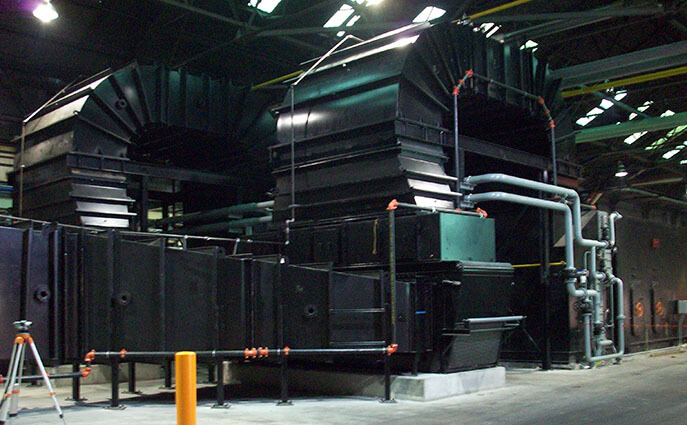Indoor air quality at manufacturing plants has become an increasingly important topic over recent decades, involving regulatory, worker productivity and retention, and health concerns. Commonly, poor indoor air quality in manufacturing plants originates from production process emissions. Either the production equipment emissions are not controlled at all (i.e., no exhaust system), or the existing exhaust system does not adequately capture the process fumes.

From a regulatory standpoint, industrial operations in the U.S. must comply with OSHA air contaminant requirements for indoor air quality as outlined in U.S. Code 29 CFR 1910 Subpart Z. Many other countries have similar regulations.
Some manufacturing plants take steps to meet more stringent indoor air quality guidance than the mandatory OSHA limits. The American Conference of Governmental Industrial Hygienists (ACGIH) provides both short-term exposure limits (STEL) and time-weighted average (TWA, measured over an eight-hour shift) exposure limits for 700 plus respirable contaminants, from asphalt fumes to benzene to particulate matter to zinc oxide.
Manufacturers have several good reasons to meet the ACGIH indoor air quality guidance limits, including:
-
Clean indoor air in the manufacturing plant helps attract and retain employees. Particularly, baby boomers are retiring and being replaced by younger, millennial workers, who have different notions of what makes for a good place to work.
-
Clean indoor air keeps employees healthier (which means reduced liability and lower workers’ compensation costs for the employer) and more productive.
-
Clean indoor air also can help attract and retain OEM customers that expect supply chain partners to achieve sustainability targets, certain EHS standards, or quality-related targets.
APC has implemented numerous projects to promote indoor air quality including providing hoods, exhaust ductwork, and emission control equipment for production equipment that previously was uncontrolled from an emissions standpoint or was inadequately controlled. Some examples of these projects include aluminum fabrication facilities – to remove fine oil mist emitted from coolant usage in the process; roofing/shingle manufacturing plants – to reduce asphalt fumes, VOCs and fine fiberglass dust from workspace air; and metal tubing/conduit plants – to remove oil mist and VOCs from process lines.
APC Technologies has extensive experience designing air pollution control systems that improve indoor air quality while meeting a wide range of needs and budgets, and ensuring EPA and OSHA compliance. Contact our team to discuss your air pollution control needs.

